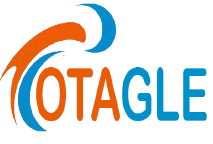In today’s fast-paced digital world, starting an online store has become more accessible than ever before. With platforms like supjavaa.shop, e-commerce entrepreneurs can easily establish their business presence online. However, merely having an online store doesn’t guarantee success. To thrive, you need strategic planning, customer engagement, optimized SEO practices, and a keen understanding of the digital marketplace. This article will walk you through the essential steps to create, grow, and scale a profitable online store on supjavaa.shop.
How to Choose the Right Products for Your Online Store
Choosing the right products is the foundation of your online business. It involves understanding market demand, customer needs, and profitability. Start by conducting thorough market research to identify trending products or niche markets that are underserved. Tools like Google Trends, and social media platforms, and keyword research tools can provide insights into what consumers are searching for.
When selecting products, it’s crucial to balance demand with supply. Opt for products with a proven market but limited competition. Additionally, consider the profit margin of each product. High shipping costs, manufacturing fees, or supply chain limitations can erode profitability.
Setting Up an Effective Website on supjavaa.shop
Your online store’s website is its digital storefront. A user-friendly, visually appealing, and fast-loading site can significantly impact sales. When setting up your store on supjavaa.shop, ensure that the website is easy to navigate. Organize products into clear categories, provide detailed product descriptions, and make the checkout process seamless.
Choose a responsive theme that works well on both mobile and desktop devices. With mobile traffic accounting for a large portion of online shopping, mobile optimization is a must. Additionally, add trust signals like customer reviews, return policies, and security badges to build credibility.
Optimizing Your Online Store for SEO
SEO (Search Engine Optimization) plays a crucial role in driving organic traffic to your online store. Begin by conducting keyword research to identify phrases that your target audience is searching for. Once you have a list of keywords, incorporate them naturally into your product descriptions, blog posts, and metadata.
Page speed, mobile responsiveness, and user experience also factor into your SEO rankings. Make sure your website loads quickly, is mobile-friendly, and is easy to navigate. Additionally, creating high-quality backlinks to your site can help improve your authority in the eyes of search engines.
Crafting a Strong Brand Identity
A compelling brand identity differentiates your store from competitors and builds a loyal customer base. Your brand includes your logo, color palette, voice, and messaging. It should resonate with your target audience and communicate your store’s values and mission.
Consistency is key when building a brand. Use the same colors, fonts, and tone across your website, social media, and marketing materials. A well-defined brand identity not only attracts customers but also helps in retaining them.
The Importance of High-Quality Product Photos
In the online shopping world, visuals are everything. Customers cannot physically touch or try on products, so high-quality images play a vital role in their decision-making process. Use professional product photography to showcase your items from multiple angles.
If you’re selling clothing or accessories, consider lifestyle shots where the product is being used. Clear, well-lit images with a white background for standard product shots and contextual images for lifestyle marketing can significantly boost sales. Make sure your images are optimized for the web, so they load quickly without sacrificing quality.
Leveraging Social Media for Marketing
Social media is a powerful tool for driving traffic to your online store. Platforms like Instagram, Facebook, and Pinterest are visually driven, making them ideal for showcasing your products. Create engaging posts that highlight your products and encourage interaction with your audience.
Use features like Instagram Stories, live videos, and Facebook Ads to connect with potential customers. Paid advertising on these platforms allows you to target specific demographics, ensuring that your marketing dollars are spent efficiently.
Driving Traffic through Paid Advertising
While organic traffic is essential, paid advertising can give your online store a quick boost. Google Ads and social media ads allow you to target specific audiences based on their interests, online behavior, and demographics. Start by defining your goals – whether it’s driving traffic, increasing sales, or building brand awareness.
Test different ad formats to see which ones resonate with your audience. Pay-per-click (PPC) campaigns on Google can help your products appear at the top of search results, while retargeting ads can remind visitors to return to your site and complete a purchase.
Customer Service Excellence in E-commerce
Customer service is a key differentiator in e-commerce. Prompt, friendly, and effective communication can turn a one-time buyer into a loyal customer. Implement live chat, clear return policies, and a customer support system that handles inquiries efficiently.
Make sure you respond to customer questions and complaints promptly. Providing excellent post-purchase support, such as tracking updates and satisfaction follow-ups, can improve customer retention and lead to positive reviews.
How to Analyze and Improve Conversion Rates
Your store’s conversion rate is the percentage of visitors who make a purchase. To improve this metric, start by analyzing your current performance. Use tools like Google Analytics to see where visitors drop off in the buying process.
Common issues include complicated checkouts, unclear product descriptions, or a lack of payment options. Simplify the checkout process by reducing the number of steps and offering multiple payment methods. Conduct A/B testing on different elements of your site to see what drives the best results.
Scaling Your Business for Long-Term Growth
Once your online store is generating consistent sales, it’s time to think about scaling. Expanding your product range, entering new markets, and increasing your marketing budget are common strategies for growth. Focus on automating repetitive tasks, such as order processing or inventory management, to free up your time for strategic planning.
Building a team to help manage different aspects of your business, such as customer service, marketing, and fulfillment, can also accelerate growth. Diversify your marketing efforts to include content marketing, influencer partnerships, and email campaigns for sustained success.
FAQs:
- What products should I sell on supjavaa.shop? Start with niche products that are in demand but not oversaturated in the market. Conduct market research to identify trends and profitable items.
- How can I improve my store’s SEO on supjavaa.shop? Focus on keyword research, page optimization, mobile responsiveness, and creating high-quality backlinks.
- How important are product images for an online store? Extremely important. High-quality images build trust and help customers make informed purchasing decisions.
- What social media platforms should I use for my online store? Instagram, Facebook, and Pinterest are ideal for e-commerce as they are visually driven and allow for targeted advertising.
- How can I boost my store’s conversion rate? Simplify the checkout process, offer multiple payment options, and provide detailed product descriptions.
- What is the best way to handle customer service for an online store? Use live chat, respond quickly to inquiries, and offer clear return policies to build trust and satisfaction.
- Is paid advertising necessary for an online store? While organic traffic is essential, paid advertising can quickly drive targeted traffic and boost sales.
- How can I scale my online store over time? Expand your product range, automate processes, and invest in diversified marketing strategies like content and influencer marketing.
- Why is brand identity important for e-commerce? A strong brand identity sets you apart from competitors and helps build customer loyalty.
- How can I analyze the performance of my online store? Use tools like Google Analytics to track metrics such as traffic, bounce rates, and conversion rates, and optimize accordingly.
Conclusion:
Building a successful online store like supjavaa.shop requires more than just setting up a website. It demands a deep understanding of the market, continuous optimization, and strategic growth planning. From choosing the right products to scaling your business, every step plays a crucial role in your long-term success.
Optimizing your store for SEO ensures a steady flow of organic traffic, while strong branding and high-quality product images foster trust and customer loyalty. Social media and paid advertising amplify your reach, and excellent customer service keeps buyers coming back.
As you scale, automating processes and refining your marketing strategies will position you for sustained growth. The e-commerce landscape is competitive, but with the right strategies in place, your store can thrive and become a leader in its niche. Keep experimenting, stay adaptable, and focus on delivering value to your customers.

